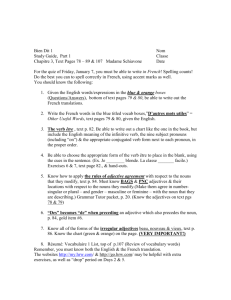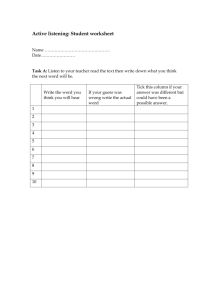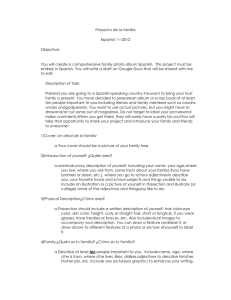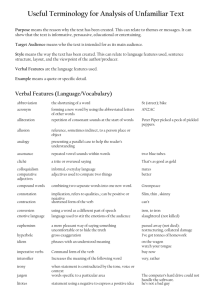Lesson 1: Japanese Introduction
advertisement
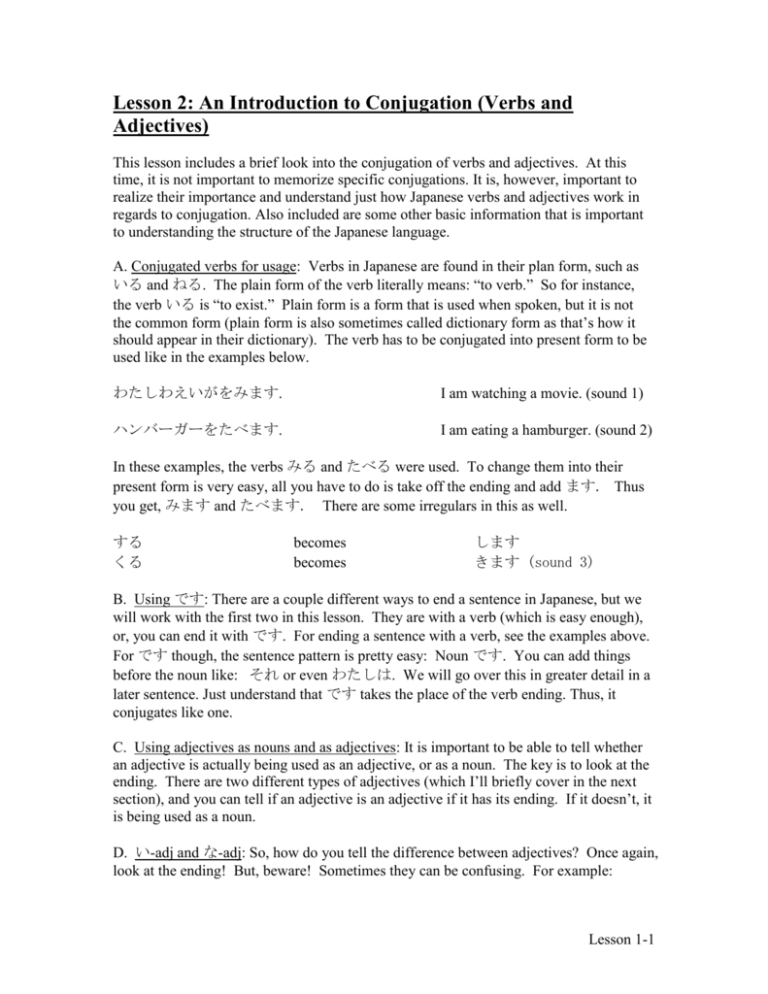
Lesson 2: An Introduction to Conjugation (Verbs and Adjectives) This lesson includes a brief look into the conjugation of verbs and adjectives. At this time, it is not important to memorize specific conjugations. It is, however, important to realize their importance and understand just how Japanese verbs and adjectives work in regards to conjugation. Also included are some other basic information that is important to understanding the structure of the Japanese language. A. Conjugated verbs for usage: Verbs in Japanese are found in their plan form, such as いる and ねる. The plain form of the verb literally means: “to verb.” So for instance, the verb いる is “to exist.” Plain form is a form that is used when spoken, but it is not the common form (plain form is also sometimes called dictionary form as that’s how it should appear in their dictionary). The verb has to be conjugated into present form to be used like in the examples below. わたしわえいがをみます. I am watching a movie. (sound 1) ハンバーガーをたべます. I am eating a hamburger. (sound 2) In these examples, the verbs みる and たべる were used. To change them into their present form is very easy, all you have to do is take off the ending and add ます. Thus you get, みます and たべます. There are some irregulars in this as well. する くる becomes becomes します きます (sound 3) B. Using です: There are a couple different ways to end a sentence in Japanese, but we will work with the first two in this lesson. They are with a verb (which is easy enough), or, you can end it with です. For ending a sentence with a verb, see the examples above. For です though, the sentence pattern is pretty easy: Noun です. You can add things before the noun like: それ or even わたしは. We will go over this in greater detail in a later sentence. Just understand that です takes the place of the verb ending. Thus, it conjugates like one. C. Using adjectives as nouns and as adjectives: It is important to be able to tell whether an adjective is actually being used as an adjective, or as a noun. The key is to look at the ending. There are two different types of adjectives (which I’ll briefly cover in the next section), and you can tell if an adjective is an adjective if it has its ending. If it doesn’t, it is being used as a noun. D. い-adj and な-adj: So, how do you tell the difference between adjectives? Once again, look at the ending! But, beware! Sometimes they can be confusing. For example: Lesson 1-1 きれい, though it ends with い but in reality, it is a な-adj So, just watch out for those kinds of things. The best way to know the difference is just by memorization. When it has an い or な at the end though, it’s action is considered adjective. Lesson 1-2

